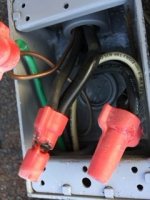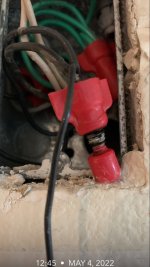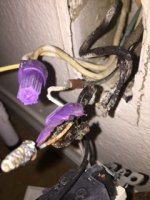If you mean the conductor insulation that was never inside the wirenut (I don't think we can see any of that), that insulation is 5-10 times farther away from the spring in the damaged area than the damaged material of the wirenut. So I could imagine the temperature gradient being high enough that the exposed conductor insulation doesn't get damaged. But it's all speculation on my part.
Cheers, Wayne
I’m speculating as well, and my theory is not one I would defend to the death.

It’s a good discussion nonetheless.





